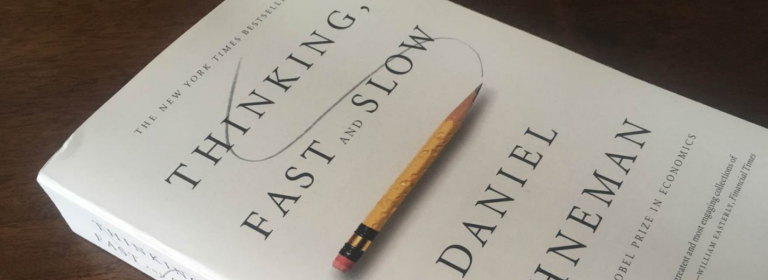Thinking Fast and Slow is a book published in 2011 by Nobel Memorial Prize in Economic Sciences laureate Daniel Kahneman. Here is the short book summary of Thinking fast and slow.
- Your brain is always looking for the most natural way out, and that could be the death of your ethical judgement making.
- Your thoughts determine how you view life, and that’s why you need to learn how to control them.
- There are several factors like illusion, availability, and experience that influence your decisions. These influences lead you to make biased concolusions.
- Thinking is not easy as it seems; it is an art that must be mastered. The mastering of thoughts comes with underatanding what constitutes your intiution and assumptions.
- Experiments and facts also shape the way you think, and this is why you should know when to switch between intuition and empirical facts.
- Daniel Kahneman’s approach toward the behaviorual pattern of people is made easy with the use of relative examples and instances.
The two systems associated with your brain are responsible for how and when you think
Psychologists Keith Stanovich and Richard west have established that humans have two primary systems of thinking.
? System 2: Which allocates attention to the effortful mental activity of any kind.
- Humans avoid an overload of information in their brain by consiciously or subconciously breaking up tasks into smaller steps.
- This is because we naturally prefer solutions that require minimum mental effort and strength, the moment a solution requires a lot of effort, the attention paid to it starts to decrease.
Breaking tasks into smaller tasks helps you work faster
- The Human brain is programmed to adjust to speed and stress. Cognitive ease comes into play because you behave in a different way when you are making an effort toward something with ease.
- When you are strained, on the other hand, your brain will adjust, and you’ll likely do the job well, but you will lack the required creativity.
- Taking your time to work with cognitive ease increases your creativity.
The human brain is programmed to adjust to speed and stress. Working when stressed increases your productivity, but limits your creativity.
- System 1 heps you shape what’s normal to you, what surprises you, and the cause of these things,
- It feeds off the information send to your brain and makes assessments based on your reaction to things.
- System 1 doesn’t make accurate conclusion, it doesn’t care about the true assessment of the information; it makes its own conclusions.
System 1 in our brain makes assumptions from innaccurate and inadequate information.
System2 works hard to find an escape route for you, especially when you are stuck with finding a solution to a problem. When you can’t find a good answer to a question, system 1 automatically finds similar questions and feeds you the answer instead.
Your brainmakes judgements about people and Situations-Whether you want to or not.
- Over and over again, your mind tricks you and itself into accpeting that a task is straightforward and simple.
- Your brain takes the easiest route available for a task, thereby minimizing effort.
- The moment your brain miscalculates the required effort needed for a task to be executed.
- you are bound to make judgements based on biasand intuition instead a facts and statistics.
- your decision about a situation can be heavily influenced by the examples you’ve heard such situations.
- How fast you can think of situations is regularly used to decide the recurrence of such occasions.
- Availability biases can cause problems. It;s npt easy to stop, but you can resist its dominance by training yourself to identify it. By maintaining your vigilance against these biases, you can control your thinking better.
Inadequate and inaccurate history about the past tend to affect the peresent and the future.
- Preventive measures are always built against the worst-case scenario of an event.
- Your brain makes the next available conclusion for you in the absense of precise data.
- The brain prefecers empirical data to lack of precise information.
- You cannot make accurate judgement by relying on assumptions alone.
- more information doesn’t mean precise information.
- Information is best used when its detailed and precise.
- Real life instances give you more information than establised facts and statistics.
- It is better to reward improved performance than to punish a mistake.
- The illusion of understanding, availability and validation deceives you into believing that you know much about the present and future.
- The accounts of the past shape the present and the future.
- A succesfull event makes people believe that the steps leading up to the eventmust equally be succesful
- Humans validate things simply because they believe in it.
- The value you place on properties and happiness is determined by wehther you own them or not.
- The value you place on something is largely determined by how well you can afford it.
- As long as there is a chance for a loss, the brain works towards avoiding it.
- Asses all possible options before dismissing them. Don’t maturally reject an alternative because it contains risk or loss.
- The human mind evaluates statements based on how they are framed and laid down.
Conclusion
Discover your thought process, evaluate your judgments about people, and see if you are making a good conclusion or not. If yes, maintain it, if no, focus on working on your bias by seeing beyond your intuition.
